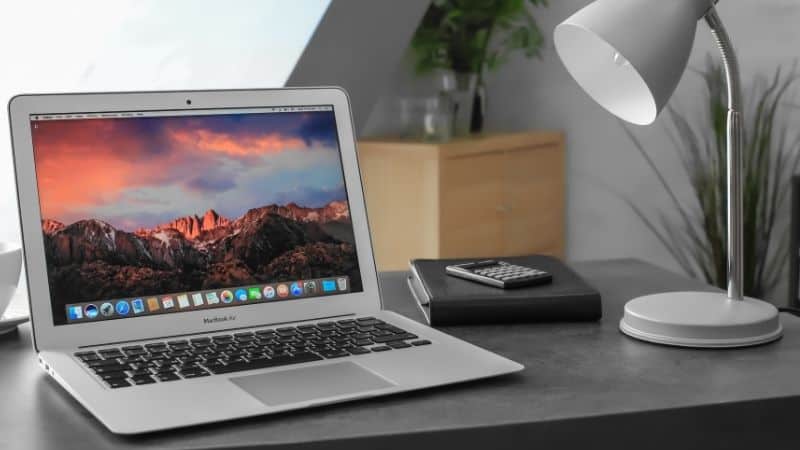How To Clean MacBook Screen

Table of Contents
Even the best and latest models of MacBook can accumulate dirt on their screens, which can really ruin the fantastic visibility they are known for.
Despite this, many MacBook owners avoid cleaning their screens for fear that they will cause damage to them. As long as you follow guidelines and use the recommended products, cleaning your screen will not cause any damage to the device.
Prime Day may have closed its doors, but that hasn't stopped great deals from landing on the web's biggest online retailer. Here are all the best last chance savings from this year's Prime event.
- Sapphire Pulse AMD Radeon™ RX 9070 XT Was $779 Now $719
- AMD Ryzen 7 7800X3D Processor Was $449 Now $341
- Skytech King 95 Ryzen 7 9800X3D gaming PC Was $2,899 Now $2,599
- LG 77-Inch Class OLED C5 TV Was $3,696 Now $2,996
- AOC Laptop Computer 16GB RAM 512GB SSD Was $360.99 Now $306.84
- Lexar 2TB NM1090 w/HeatSink SSD Was $281.97 Now $214.98
- Apple Watch Series 10 GPS+ Smartwatch Was $499.99 Now $379.99
- AMD Ryzen 9 5950X processor Was $3199.99 Now $279.99
- Garmin vívoactive 5 Smartwatch Was $299.99 Now $190
*Prices and savings subject to change. Click through to get the current prices.
Whether it is fingerprint markings or dust, giving your MacBook screen the occasional clean will really make a notable difference, and once you know how to do it properly, you'll wonder why it took you so long to do!
This article will be showing you how to clean your MacBook screen without causing any damage to it!
How To Clean A MacBook Screen
The following step-by-step guide can be done on any MacBook screen, such as the MacBook Air and Pro. It can also be done on the iMac, Mac Pro, and Mac Mini.
However, it shouldn't bed used on any MacBook that has a nano-texture glass display. There will be a separate section discussing how to clean that kind of screen at the end of this article.
Step
Switch Off Your MacBook
The first thing you need to do is make sure your MacBook is switched off and has been unplugged from the wall.
Step
Use A Microfiber Cloth
Then, with a microfiber cloth, you are to wipe the screen softly to remove any dust. You should not use anything else other than a microfiber cloth, as paper towels can actually scratch your screen.
Step
Dampen The Cloth With Some Water
If you are still seeing some smudges, then dampen the cloth with some water, and lightly continue to wipe the screen. You must only dampen the cloth, not submerge it in water, and water should never be applied directly to the screen.
Step
Use Isopropyl Alcohol For Remaining Smudges
If there are still markings and smudges on the screen, then you can use a 70% isopropyl alcohol (IPA) solution. Again, this should only be applied to the microfiber cloth and not the screen, and no other kind of cloth or paper towels should be used.
Step
Let Your Laptop Air Dry
Once you have wiped your screen fully, you should let your laptop air dry.
How To Clean The Rest Of Your MacBook
If you would like to clean the rest of your MacBook, the process is very similar.
Step
Switch Off Your MacBook
You must ensure that it is unplugged and switched off, and wipe all areas with a lint-free microfiber cloth. This will remove any dust that is lingering.
Step
You Can Also Dampen The Cloth
You can also dampen the cloth for more of a clean, but you must ensure you aren't allowing any moisture into the openings.
Step
Use Isopropyl Alcohol Wipes For A Deep Clean
If you'd like to clean your device further, you can use 70% isopropyl alcohol wipes to do this, as well as Clorox Disinfecting Wipes.
How To Clean A Laptop With Nano-Texture Glass
Laptops with nano-texture glass offer less glare and phenomenal image quality. However, because of this, you'll have fewer options when it comes to cleaning the screen.
Laptops with this screen can only be cleaned using the cloth that was supplied along with your iMac or Pro Display XDR.
For more of a clean, you can dampen the cloth with a 70% isopropyl alcohol (IPA) solution as mentioned in the previous method. As mentioned earlier, this should only be applied to the cloth, and not to the actual screen.
Final Thoughts
Cleaning your MacBook screen every so often, will ensure that all dust, dirt, and fingerprints are kept at bay, enabling you to experience the top quality that these screens are known for.
We hope you have found this step-by-step guide helpful and enjoy your newly cleaned laptop screens!

